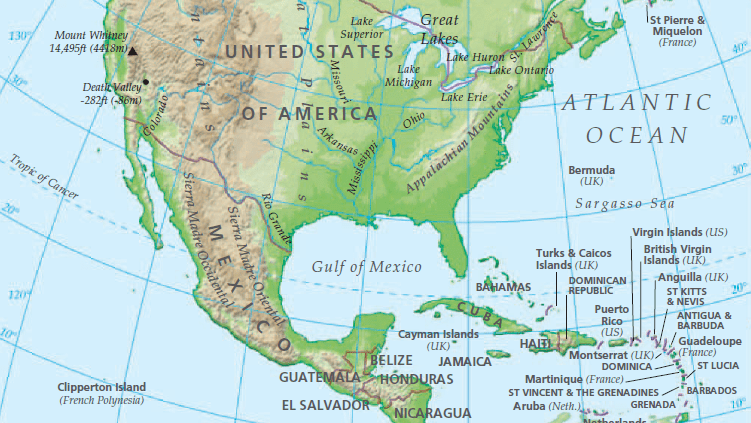The Gulf of Mexico is a large body of water located in the southwestern part of the North Atlantic Ocean. In this article we will see the location of Gulf of Mexico in World Map. It is surrounded by the North American continent on three sides: to the north by the United States, to the east and south by the state of Florida, and to the west by Mexico. The Gulf is connected to the Caribbean Sea through the Yucatan Channel and the Straits of Florida, and its southernmost point opens into the broader Atlantic Ocean.

Key characteristics of the Gulf of Mexico
- Size: The Gulf of Mexico is one of the largest gulfs in the world, covering an area of approximately 1.6 million square kilometers (615,000 square miles). It extends about 1,600 kilometers (1,000 miles) from east to west and about 1,200 kilometers (750 miles) from north to south.
- Depth: The Gulf has varying depths, with the shallowest parts along its continental shelf and the deepest areas found in the Sigsbee Deep, which reaches a maximum depth of around 4,384 meters (14,383 feet).
- Coastline: The Gulf of Mexico has an extensive coastline, featuring diverse landscapes such as sandy beaches, marshlands, and mangroves. It is home to numerous coastal cities and ports that play significant roles in trade and commerce.
- Climate and Weather: The Gulf’s climate is influenced by its warm waters, leading to higher humidity levels and significant rainfall. The region is also susceptible to tropical storms and hurricanes, especially during the Atlantic hurricane season (June to November).
- Marine Life: The Gulf of Mexico boasts a rich marine ecosystem, supporting a wide variety of marine life, including fish, crustaceans, marine mammals, and seabirds. It is a critical breeding ground for many species, making it important for fishing and conservation efforts.
- Economic Significance: The Gulf of Mexico is economically significant for the countries bordering it, particularly the United States and Mexico. It serves as a major hub for offshore oil and gas production, providing a significant portion of both countries’ energy supplies.
- Environmental Concerns: The Gulf has faced environmental challenges, including pollution from oil spills and agricultural runoff, as well as habitat destruction due to coastal development. Conservation efforts are underway to protect its delicate ecosystems.
The Gulf of Mexico plays a vital role in the economies, cultures, and ecosystems of the surrounding regions, making it a significant area of interest for scientists, geographers, and policymakers alike. Thanks for reading the article on Gulf of Mexico in World Map.